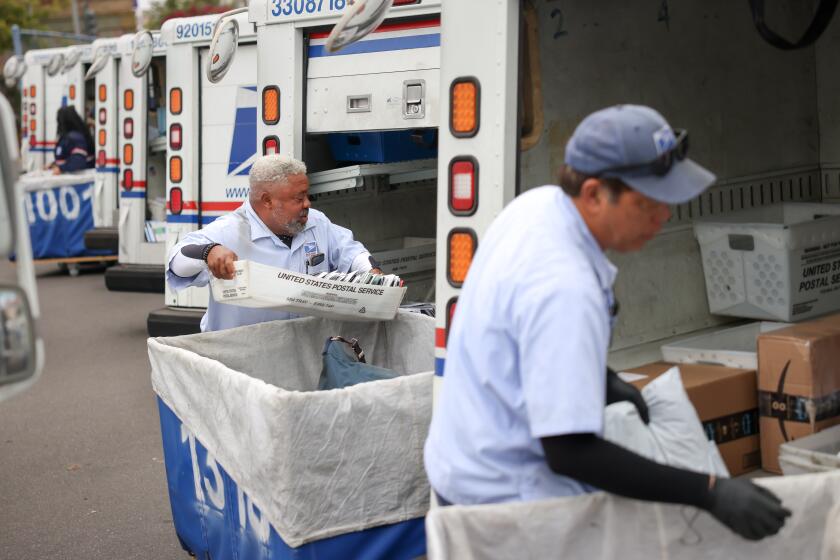U.S. Cities Flunking Ozone Standards Increase by 40% in 1 Year
- Share via
WASHINGTON — In a strong indication that ozone pollution in the United States has worsened considerably, the Environmental Protection Agency will report today that the number of cities whose air quality violates U.S. standards has increased by more than 40% in the last year alone.
The document, a copy of which was obtained by The Times, reveals that 28 cities previously in compliance with the federal standards fell out of compliance in last summer’s survey.
Another 68 cities, not all of them included in the EPA’s preliminary analysis of its 1988 data, had flunked the ozone test the previous year, and EPA expects final 1988 data to show them faring no better.
All four California cities in the EPA’s preliminary analysis of its 1988 data--Azusa, Glendora, Pasadena and Redlands--exceeded federal standards, as they had a year earlier.
15 Million More
The data, according to the House Energy and Commerce Committee’s health and environment subcommittee, indicates that 15 million more persons breathed unhealthy air in 1988 than in 1987. That brings to 150 million the number of Americans who now live in areas with higher levels of ozone or carbon monoxide pollution than considered safe by the EPA.
In a preface to its report, the EPA cautioned that the conclusions were preliminary and “not suitable for regulatory purposes.” Because some data has not yet been analyzed, an EPA official said, “the list could grow.”
The report, the first comprehensive study of U.S. ozone levels in a summer already known to be the worst in a decade, suggests that the air pollution problem may be growing ever more intractable.
“Clearly,” said Sierra Club analyst Blake Early, “we’re losing the fight.”
After showing steady improvement through the early part of the decade, air quality has deteriorated markedly in recent years. Record heat in 1988 made matters worse by speeding the chemical reactions--between organic compounds in the air and nitrogen oxides in engine exhaust--that produce ozone.
But some environmentalists and legislators, noting that patterns of global climate change make further warming trends likely, argued that hot weather is no excuse for high pollution.
“You can’t design an air pollution program on the assumption that the weather will never be bad,” said Richard Ayres of the Natural Resources Defense Council.
With “predictions of dramatic increase in the mileage traveled by motor vehicles in this country and expectations of a global warming,” warned Rep. Henry A. Waxman (D-Los Angeles), “we may see many years in the 1990s with pollution levels as bad or worse than 1988.”
In its survey last summer of 272 sites across the country, the EPA found that ozone pollution, by one standard measure, had increased an average of 14% from the year before.
The nation’s highest ozone levels were again found in the Los Angeles area. The reading in Glendora was more than 15% worse than the highest non-California reading, near the World Trade Center in New York City.
Of the four sites measured in California, Redlands showed the sharpest increase, with ozone levels up 26.1% from 1987. Azusa showed an increase of 11.5%, while Pasadena jumped 7.7% and Glendora was up 3.1%.
Cities whose air quality fails to comply with the standards face potential sanctions, including a government-ordered construction freeze and the loss of highway funding. The government has declined to enforce the penalties against the large cities, but it has begun to take action against some smaller cities.
Waxman said that he expects the EPA report to boost efforts in Congress to reauthorize the Clean Air Act. President Bush has pledged to take a leading role, but some environmentalists believe that elements within his Administration are lobbying for watered-down legislation.
More to Read
Sign up for Essential California
The most important California stories and recommendations in your inbox every morning.
You may occasionally receive promotional content from the Los Angeles Times.










